Archived Fire Damage Blog Posts
The Benefits of Having a Fire Safety Consultant for Your Business: Expert Insights from SERVPRO
12/18/2024 (Permalink)
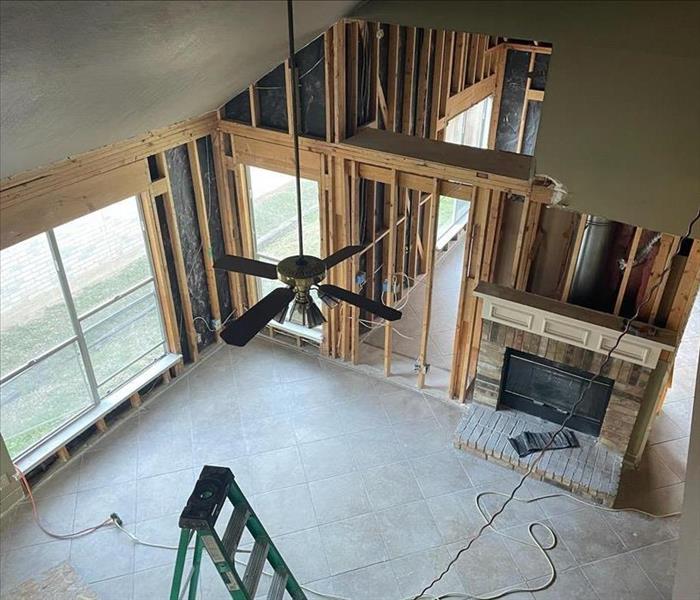 Explore the benefits of having a fire safety consultant for your business and how SERVPRO® can support your fire safety initiatives.
Explore the benefits of having a fire safety consultant for your business and how SERVPRO® can support your fire safety initiatives.
Fire safety is a vital aspect of any business’s operational strategy. Whether you run a small office or a large commercial facility, being proactive about fire prevention and safety compliance can save lives, protect property, and minimize costly downtime. One of the most effective ways to ensure your business is prepared is by hiring a fire safety consultant. These experts specialize in assessing risks, implementing safety measures, and ensuring compliance with fire safety codes.
In this blog, we’ll explore the benefits of having a fire safety consultant for your business and how SERVPRO® can support your fire safety initiatives.
What Does a Fire Safety Consultant Do?
A fire safety consultant provides specialized knowledge and expertise to help businesses assess fire risks, develop safety protocols, and ensure compliance with local, state, and federal fire regulations. Their role is to guide businesses through fire prevention strategies, emergency planning, and ongoing maintenance of fire protection systems.
Here are some of the core tasks a fire safety consultant typically handles:
- Risk assessments: Identifying fire hazards within your building or facility.
- Fire safety planning: Developing customized fire safety plans, including evacuation routes and emergency procedures.
- Code compliance: Ensuring your business adheres to relevant fire codes and safety regulations.
- Training: Offering training sessions to staff on fire safety protocols, fire extinguisher use, and evacuation procedures.
- System inspections: Checking fire alarms, sprinkler systems, and extinguishers to ensure they are fully operational.
By bringing in a fire safety consultant, you get the peace of mind that your business is not only compliant with regulations but also equipped with the latest safety practices.
The Benefits of Hiring a Fire Safety Consultant
The decision to hire a fire safety consultant can make a significant difference in the protection and safety of your business. Below are the key benefits that a consultant provides.
1. Expert Guidance on Fire Codes and Regulations
Fire safety regulations can be complex and change frequently. A fire safety consultant stays up to date with the latest fire codes and standards, ensuring your business remains compliant. This can prevent costly fines, reduce liability, and avoid disruptions in your business operations.
For example, according to the National Fire Protection Association (NFPA), compliance with fire codes is essential because fire departments in the U.S. respond to an average of 36,784 fires at industrial or manufacturing properties between 2017 and 2021. Fire safety consultants can help prevent your business from becoming a part of these statistics.
2. Comprehensive Risk Assessments
One of the most valuable services a fire safety consultant provides is a comprehensive risk assessment. This thorough evaluation identifies fire hazards specific to your business, from faulty electrical systems to improperly stored flammable materials. With this information, you can address risks proactively and reduce the likelihood of a fire.
3. Customized Fire Safety Plans
Every business is unique, which means your fire safety plan should be tailored to your specific needs. A fire safety consultant develops a custom fire safety plan that includes evacuation procedures, the location of fire extinguishers, and protocols for employees to follow in case of an emergency. This personalized approach ensures that all fire risks are mitigated according to the specifics of your building and business operations.
4. Staff Training and Preparedness
Even with the best fire safety systems in place, employees need to know how to respond during a fire emergency. Fire safety consultants provide training that equips your staff with the knowledge and skills necessary to evacuate safely and respond to fires quickly and effectively. Well-trained employees can make the difference between a minor incident and a major catastrophe.
5. Ongoing Fire Safety Maintenance and Support
A fire safety consultant doesn't just help you set up a fire prevention plan — they offer ongoing support to ensure that your fire protection systems are regularly inspected and maintained. This includes scheduling routine fire alarm tests, sprinkler system inspections, and ensuring that fire extinguishers are up to date.
Why Choose SERVPRO for Fire Safety Consulting?
SERVPRO offers comprehensive fire safety consulting services tailored to the unique needs of your business. Our experienced consultants work with you to assess risks, ensure compliance, and develop a customized fire safety plan. We combine our expertise in fire damage restoration with proactive safety measures to keep your business safe from the threat of fire.
Final Thoughts: Invest in Fire Safety to Protect Your Business
Hiring a fire safety consultant is a proactive step in safeguarding your business from potential fire risks. With expert guidance, customized plans, and ongoing support, a fire safety consultant ensures that your business is compliant with fire safety regulations and prepared for any emergency.
Partnering with SERVPRO for fire safety consulting gives you the expertise and assurance that your business is protected from fire hazards. Don’t wait for an emergency to act — contact our team today and take the necessary steps to protect your property, employees, and customers.
Comprehensive Guide: The Step-by-Step Process of Fire Damage Cleanup
8/14/2024 (Permalink)
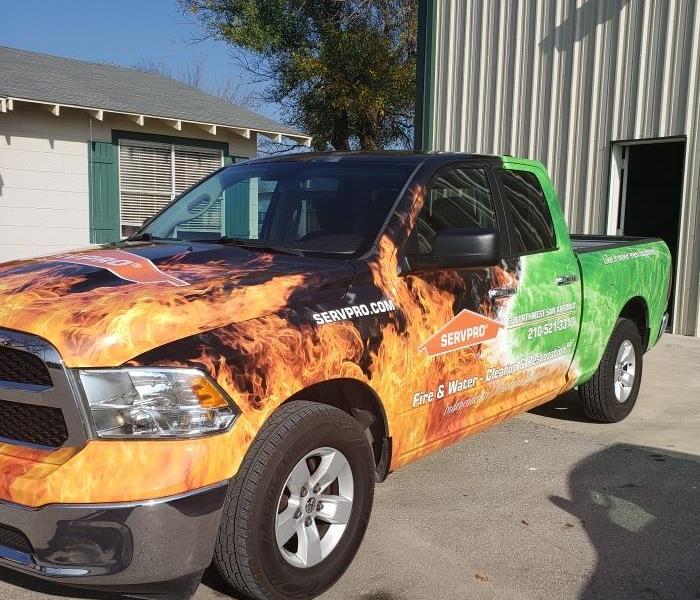 This blog outlines the detailed process of fire damage cleanup to help you understand what to expect and how to recover.
This blog outlines the detailed process of fire damage cleanup to help you understand what to expect and how to recover.
Experiencing a fire in San Antonio, TX, can be devastating, but understanding the fire damage cleanup process can help you navigate this challenging time. SERVPRO® is here to guide you through each step, ensuring your home is restored safely and efficiently. This blog outlines the detailed process of fire damage cleanup to help you understand what to expect and how to recover.
Initial Assessment and Safety Measures
Immediate Response
The first step in the fire damage cleanup process is to contact a professional restoration service like SERVPRO. Quick response is crucial to prevent further damage and ensure safety.
Safety First
Upon arrival, our team will conduct a thorough safety assessment to identify any potential hazards. This includes checking for structural damage, electrical hazards, and ensuring the property is safe to enter.
Detailed Inspection and Damage Assessment
Comprehensive Evaluation
Our experts will perform a detailed inspection to assess the extent of the fire, smoke, and soot damage. This evaluation helps us develop a tailored cleanup plan that addresses all affected areas.
Documentation
We will document the damage with photographs and detailed notes, which are essential for insurance claims and ensuring a smooth restoration process.
Water Removal and Drying
Water Extraction
Fires are often accompanied by water damage due to firefighting efforts. The next step is to remove any standing water using specialized equipment like pumps and vacuums.
Drying and Dehumidification
Once the water is removed, we will use industrial-grade dehumidifiers and air movers to dry out the affected areas. This step is crucial to prevent mold growth and further damage.
Soot and Smoke Removal
Cleaning and Sanitizing
Soot and smoke can leave behind stubborn stains and odors. Our team uses advanced cleaning techniques and products to remove soot from surfaces such as walls, ceilings, and furniture. We also sanitize the affected areas to ensure a clean and safe environment.
Air Purification
We employ air scrubbers and fogging equipment to eliminate smoke odor and improve air quality. This step is vital to restoring a healthy living environment.
Restoration and Repairs
Minor Repairs
Depending on the extent of the damage, we will perform minor repairs such as replacing drywall, painting, and installing new carpeting.
Major Reconstruction
For severe damage, our team is equipped to handle major reconstruction projects. This can include rebuilding entire rooms or structural elements to restore your home to its pre-fire condition.
Final Inspection and Quality Assurance
Thorough Inspection
After the cleanup and restoration are complete, we will conduct a final inspection to ensure all work meets our high standards of quality and safety.
Customer Satisfaction
Your satisfaction is our top priority. We will walk you through the restored areas, address any concerns, and ensure you are completely satisfied with our services.
Navigating the aftermath of a fire can be overwhelming, but with SERVPRO's step-by-step fire damage cleanup process, you can feel confident in restoring your home. Our professional team is dedicated to providing efficient, high-quality restoration services to help you recover quickly. Trust SERVPRO to bring your home back to life.
Clearing the Air: Harnessing the Power of Ozone Treatments to Eradicate Smoke Odor
4/17/2024 (Permalink)
Smoke odor is not only persistent but can also be a constant reminder of past fire incidents. While tackling this challenge might seem daunting, ozone treatments emerge as a powerful solution in the restoration toolkit. In this blog, we'll explore the effectiveness and considerations of using ozone treatments to eliminate smoke odor.
Understanding Ozone: A Natural Purifier
Ozone, a molecule composed of three oxygen atoms, serves as a natural purifier in the Earth's atmosphere. This characteristic is harnessed in controlled environments to neutralize and eliminate stubborn odors, particularly those left behind by smoke. Ozone treatments involve the introduction of ozone molecules into the affected space, initiating a process that breaks down odor-causing compounds and leaves behind a fresher environment.
How Ozone Treatments Work
Oxidation of Odor Molecules:
- Ozone treatments work by oxidizing the molecules responsible for smoke odor. Ozone reacts with these compounds, altering their chemical structure and neutralizing the unpleasant smell.
- Penetration into Pores and Fabrics:
- Ozone has the ability to penetrate porous materials and fabrics, reaching areas that might be challenging for traditional cleaning methods. This comprehensive coverage ensures that even hidden sources of smoke odor are addressed.
- Elimination of Lingering Odors:
- Unlike masking agents that temporarily cover up odors, ozone treatments aim to eliminate the source of the smell. This results in a longer-lasting and more effective solution to smoke odor removal.
- Non-Residual Process:
- Ozone treatments leave no chemical residues behind. Once the treatment is complete, the ozone naturally reverts to oxygen, leaving the treated space fresh and odor-free.
Considerations for Ozone Treatments
- Professional Expertise:
- Ozone treatments should be conducted by trained professionals with expertise in restoration. Proper equipment and knowledge are essential to ensure safe and effective application.
- Vacate the Treated Space:
- During ozone treatments, occupants and pets should vacate the treated space. Ozone can cause respiratory irritation, and safety precautions are necessary to minimize exposure.
- Duration of Treatment:
- The duration of ozone treatments depends on the severity of the smoke odor. Professional assessments guide the appropriate length of treatment to achieve optimal results.
- Post-Treatment Ventilation:
- After ozone treatments, thorough ventilation is crucial. Allowing fresh air to circulate helps dissipate any remaining ozone and ensures a safe environment for reoccupation.
Ozone treatments stand as a powerful and non-intrusive method for eliminating smoke odor. By leveraging the natural oxidizing properties of ozone, restoration professionals can provide clients with a lasting solution to a challenging problem. As with any restoration technique, it is imperative to engage the services of experienced professionals who understand the intricacies of ozone treatments, ensuring a successful outcome and a breath of fresh air for spaces plagued by persistent smoke odors.
Exploring the Devastating Impact of Fire Damage on Flooring and Carpets
11/28/2023 (Permalink)
Fires can cause significant damage to properties, including the flooring and carpets. The impact of fire damage on these surfaces can be devastating and may require extensive restoration. In this blog, we will explore the effects of fire damage on flooring and carpets and the steps that can be taken for restoration.
Damage to Flooring
The type of flooring in a property will determine the extent of damage from fire. For instance, wooden or laminate flooring can suffer damage when exposed to high levels of heat. The wood may warp or buckle if it absorbs moisture, and the finish may bubble or peel off. Low-quality subfloors may also be damaged by the heat, as overexposure to high temperatures can cause cracking and distortion.
Tiles and stone floors are much more durable, but they may still be affected by fire damage. Tiles may crack or become dislodged due to exposure to high temperatures or rapid cooling. Stone floors may suffer discoloration, cracking, and chipping.
Carpets and Rugs
Carpets and rugs are susceptible to fire damage and can often be challenging to restore. Smoke and fire residues can leave behind a strong odor and discoloration, making it necessary to remove and replace the damaged carpets. The heat from a fire can cause synthetic carpet fibers to melt and stick together, making them hard and brittle. The warping or buckling of subfloors can also cause carpets and rugs to become lumpy and uneven.
Restoration Process
The restoration process for fire-damaged flooring and carpets is a delicate and time-sensitive process. The first step is to assess the extent of the damage to determine whether the flooring or carpet requires replacement or restoration. If possible, the damaged area should be isolated to prevent the spread of soot or ash.
For flooring, the subfloor may require replacement or repair, depending on the extent of the damage. Wooden or laminate flooring may need to be refinished to repair any bubbling or peeling. The tiles may need grout repair or replacement, and natural stone may require honing or polishing.
For carpets, restoration will depend on the extent of the damage. Cleaning solutions and equipment, such as vacuums, steamers, and dehumidifiers, may be used to remove the soot and smoke odor and begin the restoration process. However, in severe cases, the carpets may need replacement.
Fire damage can have a profound impact on the flooring and carpets of a property. Smoke, heat, and soot can cause damage ranging from discoloration to warping and melting. The restoration process involves careful assessment, cleaning, and repair of the affected area to restore it to its original condition. It is essential to work with fire restoration professionals who have the expertise and equipment to properly handle the damage while minimizing further harm. Through restoration, it is possible to return your property's flooring and carpets to their pre-fire condition.
How Do I Keep My Building Secure After a Fire? A Guide to Protecting Your Property Post-Fire
8/9/2023 (Permalink)
 Securing your building after a fire to minimize further damage to help move forward.
Securing your building after a fire to minimize further damage to help move forward.
Experiencing a fire in your building can be a devastating and traumatic event. In the aftermath, it's crucial to ensure that your building remains secure and safe, even during the restoration process. In this blog post, we'll discuss how to keep your building secure after a fire and provide helpful tips for protecting your property in the long run.
Secure Your Building Immediately
After a fire, it's essential to secure your building immediately to prevent further damage or theft. Contact your insurance company and a professional fire damage restoration company to board up any openings, such as doors and windows, and to minimize exposure to the elements.
Installing temporary fencing around your building can provide additional security and restrict access to your property. This can help to keep out curious onlookers or opportunistic thieves who may try to take advantage of the damage to your building.
Identify and Document All Damages
It's crucial to document all damages and losses in detail for insurance and legal purposes. Take photos and videos of the damage, and keep a list of all damaged property, including furniture, electronics, and fixtures. If possible, remove and secure any valuable items from your building. This may include jewelry, artwork, and important documents. Store them in a safe, secure location until needed.
Monitor Your Building
Consider installing surveillance cameras and security systems to help monitor your building 24/7. This can help to deter any intruders or vandals and allow you to monitor any activities in real-time. Once your building is secure, it's essential to continue with maintenance and repairs to prevent further damage or loss. This may include routine cleaning, HVAC maintenance, and structural repairs.
Educate Your Staff and Tenants
If your building houses multiple tenants or has staff, it's crucial to educate them on fire safety and emergency protocols. This can help to prevent future fires and minimize damage if a fire does occur. Evaluate your existing fire safety measures and make any necessary improvements or upgrades. This may involve installing or upgrading smoke detectors, fire extinguishers, and sprinkler systems. It's important to follow local fire safety regulations and guidelines to ensure your building is up to code
Schedule regular inspections with a qualified fire safety professional to ensure that your building remains compliant with fire safety standards. These inspections should cover all fire safety equipment, including alarms, extinguishers, and emergency lighting. Implementing a proactive approach to fire safety can help prevent future incidents.
Enhance Building Security Systems
Evaluate your building's security systems and consider enhancing them to provide better protection. This may involve installing access control systems, security cameras, and alarm systems. Hire a reputable security company to customize a security plan that meets the unique needs of your building.
Create a comprehensive emergency response plan that outlines the appropriate steps to take in case of a fire or other emergencies. Educate your staff and tenants on the plan and conduct regular drills to ensure everyone is familiar with the procedures. Include evacuation routes, designated meeting points, and instructions for reporting emergencies.
Communicate with Insurers and Authorities
Make sure to keep your insurance company informed about any security measures you implement following a fire. This can help ensure that your building remains adequately covered in case of future incidents. Additionally, communicate with local authorities and fire departments to maintain a positive relationship and access their expertise.
Building security is an ongoing effort, so it's crucial to review and update your security measures regularly. Stay up to date with the latest technologies, best practices, and regulations in fire safety and building security. Conduct periodic assessments to identify potential vulnerabilities and address them promptly.
Experiencing a fire in your building can be traumatic, but taking steps to secure your property and minimize further damage can help you move forward. With careful planning and attention to detail, you can rebuild and restore your property to its former glory.
When to Change Your Smoke Alarm Batteries: A Comprehensive Guide
4/28/2023 (Permalink)
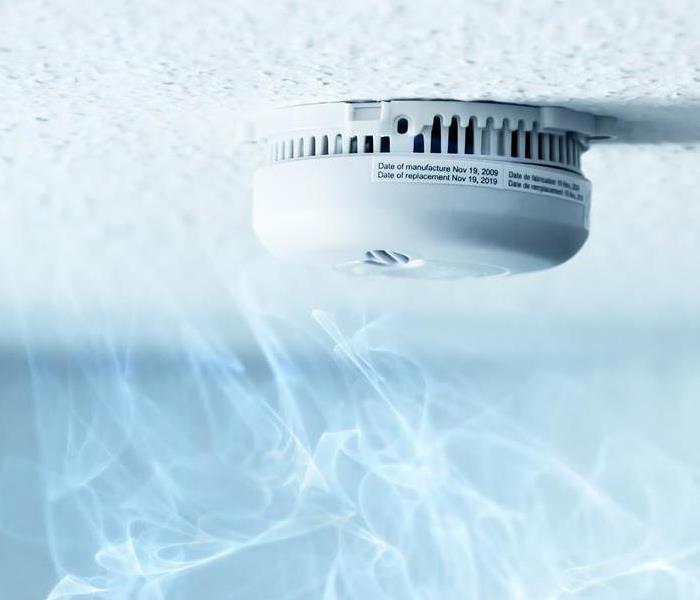 Smoke alarms are a crucial part of keeping your home safe incase of a fire.
Smoke alarms are a crucial part of keeping your home safe incase of a fire.
If you're like most people, you probably don't think about the smoke alarms in your home until they go off. But that's a mistake, smoke alarms are one of the best ways to protect yourself and your family from fires.
Smoke alarms are available in two main types: ionization and photoelectric. Both types use tiny amounts of power and run on batteries, so it's important to replace them regularly when they run low or die out completely. In fact, according to the National Fire Protection Association (NFPA), most residential fires occur at night when no one is awake--so it's crucial that all homes have working smoke detectors installed throughout their residences!
How Often Should I Change My Smoke Alarm Batteries?
You should change your smoke alarm batteries once a year, or when you hear the chirp. You can also change them after a power outage, if you're not sure how long they've been in use.
If you're unsure whether or not it's time to replace your smoke alarms, check out our blog post on how often should I change my smoke alarm batteries?
Tips for Changing Your Smoke Alarm Batteries
Test the alarm after replacing the batteries.
Write the date of replacement on the smoke alarm.
Replace all batteries at the same time, whether they're low or not.
What Type of Batteries Should I Use?
The type of battery you use is important. The best choice is a high-quality alkaline battery, like Duracell or Energizer. Alkaline batteries have a longer shelf life than other types of batteries and are less likely to leak if they're accidentally left in the smoke alarm for an extended period of time.
Battery life varies depending on the brand, but most standard 9V batteries can last anywhere from one year to five years before needing replacement (if you replace them annually).
What Are the Benefits of Smart Smoke Alarms?
The benefits of smart smoke alarms are many. First, they can be monitored remotely, so you can keep an eye on your home from anywhere in the world. Second, because these devices use batteries that last longer than traditional ones, you won't have to worry about replacing them as often. Finally, smart alarms will automatically test themselves and let you know if there's any problem with the device or its battery. Replace your batteries to ensure your family is safe from a fire emergency.
Do’s and Don’ts of a Grease Fire
1/24/2023 (Permalink)
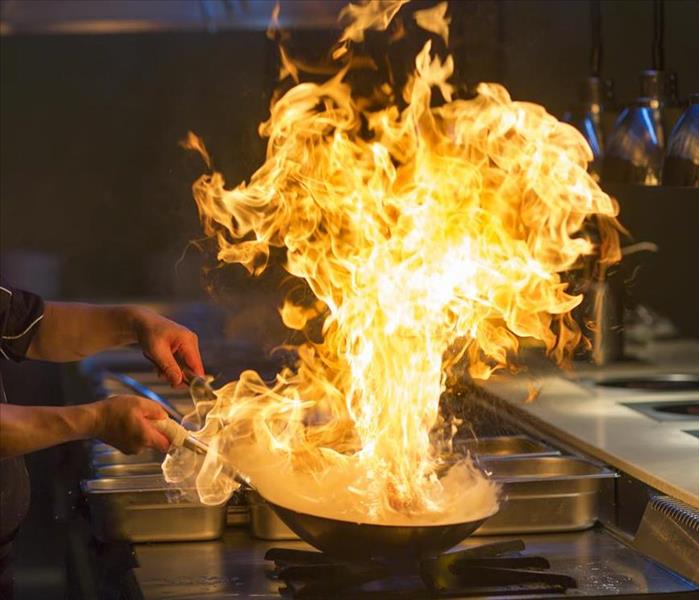 If you have a grease fire in your San Antonio home, it is important to know what to do and not do.
If you have a grease fire in your San Antonio home, it is important to know what to do and not do.
Grease fires can be extremely devastating and can cause serious damage to your home and personal belongings. A grease fire occurs when cooking oil or fat overheats and ignites. These fires can spread quickly and are difficult to extinguish, making them particularly dangerous.
Do:
When faced with a fire, call 911 immediately. Do not delay in seeking help. If you are able to do so safely, get everyone out of the house and wait for the fire department to arrive. If not, make sure that you get out yourself and then call 911 as soon as possible.
If you have time, try to move away from potential hazards such as walls or other flammable materials before attempting to put out the flames.
If there is a grease fire in your kitchen or another area where it would be difficult to evacuate everyone safely, keep an extinguisher nearby at all times just in case an emergency arises where one would be needed. When using a fire extinguisher, remember to aim at the base of the flames. You will need to spray the fire until it is completely out.
If you are unfamiliar with how to use a fire extinguisher, make sure that you get training before attempting an emergency response. If you do not know what kind of fire extinguisher to use or how to actually operate it, leave the area and call 911 instead.
Don’t:
Do not use water to put out a grease fire—this will only spread the flames! Instead, grab a lid or baking pan and slide it over a small grease fire in your pan or pot. Put on oven mitts and remove any other nearby items that could catch fire (such as paper towels) before sliding the lid over the top of the pan/pot with confidence; be sure not to drop it into your burning oil!
If you find yourself in a situation where there is a grease fire, do not panic. Try to remain calm and assess the situation. If you can do this without panicking, then your chances of successfully extinguishing the fire will be much higher.
If you have a grease fire in your San Antonio home, it is important to know what to do and not do. You should never try to put out a fire with water or any other liquid. The best response is to stay calm and call 911 as soon as possible. When it comes to cleaning up your home and contents after a fire, give SERVPRO of Northwest San Antonio a call and we’ll be out to help clean up and restore your home in no time.
3 Ways To Prevent Cigarette Fires
8/26/2022 (Permalink)
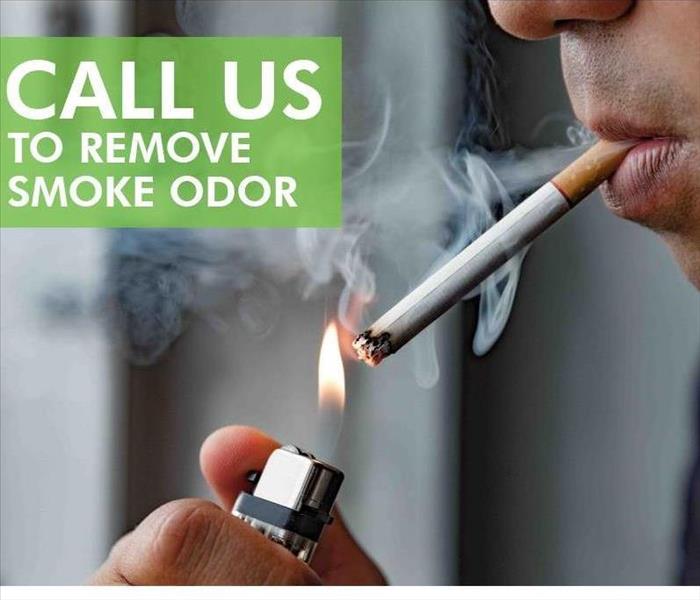 As long as you take preventative measures to avoid a cigarette fire, you won't have to worry about contacting fire restoration professionals.
As long as you take preventative measures to avoid a cigarette fire, you won't have to worry about contacting fire restoration professionals.
Prevent Cigarette Fires
Would it surprise you to learn that in 2014 alone, upward of $400 million in residential property damage was caused by cigarette-related sources? From how smokers dispose of cigarettes to where in the house they choose to light up, each use indoors comes with a certain degree of risk. Here are three tips to protect your house from a potential cigarette fire.
1. Don't Smoke in the House
The average American has dozens of combustible chemicals in their home, including air fresheners, cleaning solutions, cosmetics, and cooking sprays. These materials can act as prime fuel sources when exposed to the heat given off by cigarettes. These agents often build up on the carpet and furniture. Outdoor smoking is one of the easiest ways to alleviate the danger of a cigarette fire.
2. Dispose of Cigarettes Safely
You may also have to worry about an ashtray fire if you smoke. To prevent an ashtray from tipping over and becoming a fire hazard, you should purchase a deep, wide-brimmed one, which will be inherently more stable. Even when putting a cigarette into an ashtray, it's critical to make certain that the butt is completely out. Submerging spent cigarettes in water can guarantee that they pose no danger. Keeping ashtrays away from your house is also an option.
3. Educate Your Family To Avoid a Fire Cleanup
Having a serious conversation with any children in the household can make all the difference. They need to understand that cigarettes, lighters, and matches are not toys to be played with. Whether your family lives in San Antonio, TX, or any other part of America, the training will be equally beneficial.
As long as you take preventative measures to avoid a cigarette fire, you won't have to worry about contacting fire restoration professionals. These tips can help keep you and your family safe for years to come.
When a Fire Happens
7/9/2022 (Permalink)
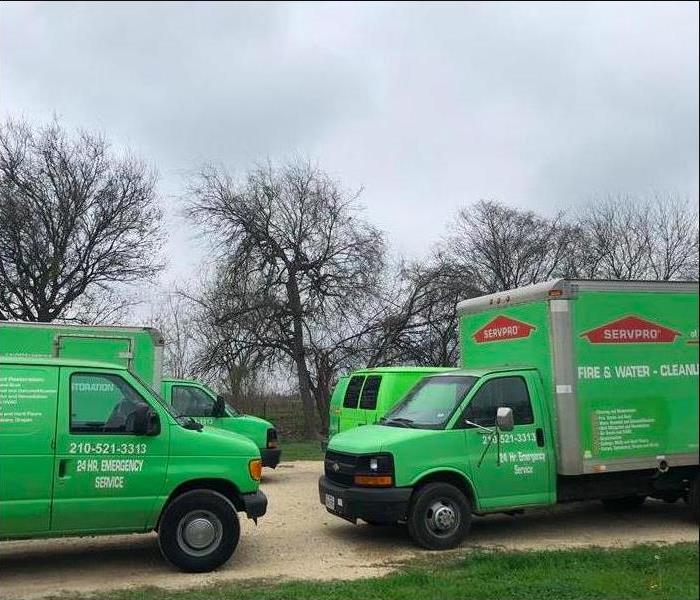 Our vans are ready to head your way!
Our vans are ready to head your way!
Fire Happens
Common households in San Antonio, TX mishaps happen all the time. However, most of these don’t involve an insurance claim. Throughout the United States, household kitchen fires occur every 18 seconds! That statistic is mind blowing! The typical scenario is when the cook becomes distracted and the stovetop is left unattended.
Phone calls, a knock at the door, children calling for their parent’s attention are all common reasons we hear for the cause.
Here at SERVPRO of Northwest San Antonio, we’re well equipped to react to these calls, typically, responding and on-site the day of the event.
With state-the-art cleaning supplies and chemicals partnered with industry-leading training for all our technicians, SERVPRO of Northwest San Antonio can handle any size job that comes our way.
Most fire/smoke damage clean-ups take 3-5 days, involving structure cleaning of the walls, ceilings, and floors, HVAC system, and air duct cleanings.
Soot spares no one and contents is also part of the job scope when performing smoke damage mitigation cleaning. Hard surface furniture, sofas, chairs, and other upholstered items are cleaned including Bric a Brac items in drawers and cabinets. Literally, everything in the home gets cleaned. By the end of the job, the house is the cleanest it’s ever been!
We here at SERVPRO of Northwest San Antonio are ready for the unexpected. We’ve planned and prepared for your emergency.
Should the unexpected happen to you. Please know we’re here to make it “Like it never even happened.”
How To React to a Gas Leak
3/14/2022 (Permalink)
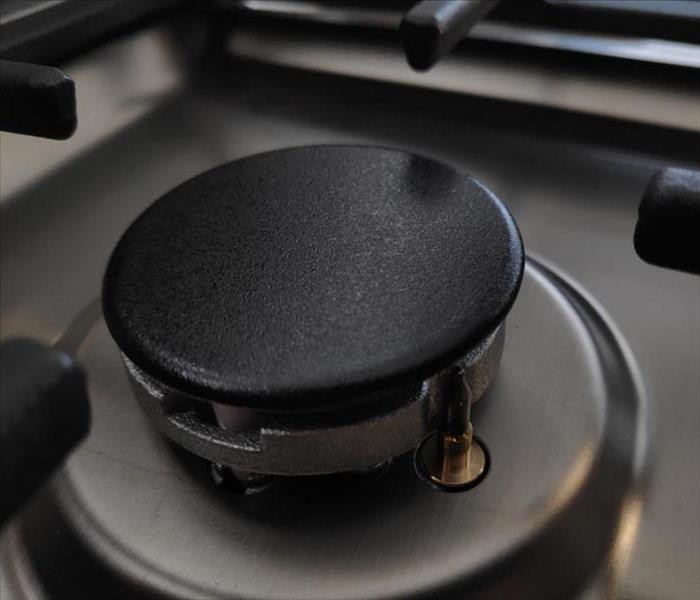 The best way to avoid a gas fire is to react quickly to a leak. Typically, you will identify a leak by smelling sulfur or rotten eggs.
The best way to avoid a gas fire is to react quickly to a leak. Typically, you will identify a leak by smelling sulfur or rotten eggs.
What To Do If There Is a Gas Leak
While gas delivery systems are very safe, the pipes can still deteriorate and leak with age. A gas leak can quickly turn into a gas fire or explosion. These can quickly burn through your home and cause a lot of damage. If you want to avoid this unpleasant situation, you need to know the signs of a leak and what to do in this emergency.
What To Do if You Smell Gas
The best way to avoid a gas fire is to react quickly to a leak. Typically, you will identify a leak by smelling sulfur or rotten eggs. If you smell gas, you need to do the following:
- Leave the area and get to safety
- Call the utility provider and let them know about the leak
- Call 911 to notify fire officials
- Help others evacuate and stay clear of the area until it is proven safe
- Call a fire remediation company to help remove the smell and any potential damage from your home in San Antonio, TX.
Other Ways To Identify Gas
Most people identify natural gas by its smell. While the gas itself is odorless, a sulfur-based odorant is added to give it the associated rotten egg smell so it can easily be identified. However, this is not the only way to identify this substance. If you are outdoors, you can often see it. Any gas escaping from an underground pipeline will be recognizable by the discolored soil and dead vegetation around the line.
You can also identify a potential gas fire threat in your home by listening. If you hear a high-pitched whistle or hissing noise, there is a chance that this is caused by escaping gas from your pipes.
If you want to avoid a gas explosion or fire, you must react appropriately. Knowing the signs of a leak and what to do in this event can help you avoid devastation.
3 Tips To Prevent a Candle Fire
3/13/2022 (Permalink)
 It only takes a matter of minutes for a candle fire to spread to other parts of your home. Call us if you need help!
It only takes a matter of minutes for a candle fire to spread to other parts of your home. Call us if you need help!
3 Candle Fire Prevention Tips
Candles are a popular choice in San Antonio, TX, for lighting, décor, ceremonial uses, and even fragrance. While they can be beautiful, candles can also be dangerous. According to the National Fire Protection Association, an average of 21 candle fires are reported each day. It only takes a matter of minutes for a candle fire to spread to other parts of your home. These tips can help you use candles safely.
1. Pay Attention to Placement
Be sure to put candles in a sturdy holder or container that won’t be easily knocked over. Place the holder on a flat, sturdy surface. Choose a location that is safely away from children and pets and is at least 12 inches away from anything flammable, such as books, decorations, curtains, furniture, paper, or clothing. Avoid candles if anyone in your home uses an oxygen tank.
2. Don’t Walk Away
Never leave a burning candle unattended, especially if there are other people in the house. Keep an eye on the wax level and be sure to put the candle out before it gets too low. If the flame gets too close to the bottom of the container or side of the holder, the holder could become extremely hot or even explode, sparking a candle fire.
3. Consider Alternatives
Today, there are many options available that mimic a candle’s soft, flickering glow. Battery-operated flameless candles come in a variety of shapes, sizes, and colors. Because they don’t emit heat, these candle alternatives can be safely used just about anywhere. If scent is your primary motivation for using candles, consider using a fragrance diffuser with scented essential oils, or a plug-in air freshener. If you keep candles on hand for power outages, swap them for battery-powered flashlights. Keep fresh batteries with the flashlights to be sure you’re prepared.
A flickering candle may look lovely or smell amazing, but no candle is worth the potential injuries, smoke cleanup, and structural repairs that can accompany a candle fire.
How To Check Your Home's Alarm System
2/8/2022 (Permalink)
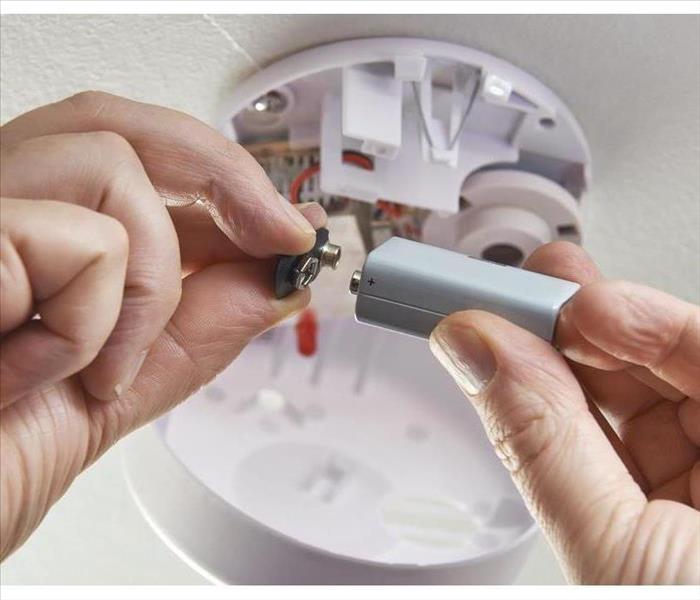 Regardless of the replacement for the battery, fire remediation experts recommend that you test each smoke alarm every month to make sure it's working
Regardless of the replacement for the battery, fire remediation experts recommend that you test each smoke alarm every month to make sure it's working
How To Examine Your Home's Security System
Despite the efforts you make to ensure your home in San Antonio, TX, is safe, no home is completely fireproof. A working smoke alarm system is a vital part of an adequate emergency preparedness system. Older smoke alarms need replacement batteries once a year, but the rules change as you upgrade your detectors. Following these inspection tips can help keep your system in top form.
Power Check
First, you want to make sure all your detectors have power. The power source depends on the type of smoke detector you have in your system:
- Battery-operated detectors (9-volt batteries) should have the batteries replaced every year.
- Battery-operated detectors (lithium batteries) should be completely replaced every ten years.
- Hardwired systems should have the backup battery replaced yearly, and the detectors replaced every ten years.
Regardless of the replacement for the battery or detector, fire remediation experts recommend that you test each smoke alarm every month to make sure it's working. Don't rely strictly on a schedule. Replace faulty alarms whenever necessary.
Age Check
No matter where your detectors get their power, all of them must be replaced every ten years to keep the system in shape for detecting fire damage. Checking the age of the devices in your system is easy. Remove each detector from the ceiling or wall and turn it over. The date of manufacture should be printed on the back. As long as the date is within the last ten years and the device is still working, it does not need to be replaced. Return it to its designated spot and make sure that it is linked with the rest of the system.
Testing your smoke alarm system once a month is a crucial part of home maintenance. If you have outdated detectors or your power source is not properly supporting the system, prompt maintenance can help keep you safe during a home fire.
 Explore the benefits of having a fire safety consultant for your business and how SERVPRO® can support your fire safety initiatives.
Explore the benefits of having a fire safety consultant for your business and how SERVPRO® can support your fire safety initiatives.






 24/7 Emergency Service
24/7 Emergency Service








